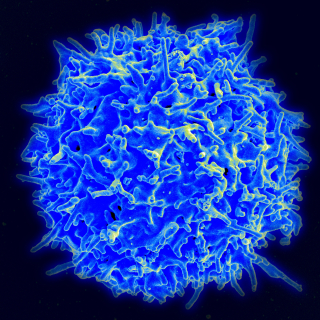 Like many therapies today, the so-called checkpoint inhibitor drugs that boost the immune system to fight cancer have an interesting back story on how they made it into the clinic. Hint: it didn’t all start in a cancer biology laboratory. A major part of the story began with microbiologists studying infectious diseases.
Like many therapies today, the so-called checkpoint inhibitor drugs that boost the immune system to fight cancer have an interesting back story on how they made it into the clinic. Hint: it didn’t all start in a cancer biology laboratory. A major part of the story began with microbiologists studying infectious diseases.
The journey makes sense, given the players involved: T cells, immune responses, co-stimulatory signals. The microbes that cause diseases like HIV, tuberculosis, and hepatitis C exploit and often activate the same checkpoint pathways -- cell surface receptors such as CTLA4 and PD-1 -- to slow immune cells and prevent their elimination by the host.
In such a scenario, T cells that are supposed to clear the infection, instead, become “exhausted.” Checkpoint inhibitors revitalize exhausted T cells so that they can come back to fight infection another day, or as E. John Wherry, PhD, director of the Institute for Immunology at Penn and a professor of Microbiology, and others have now learned, to also fight cancer cells.
“We are to the point in which our study of chronic infectious diseases is providing opportunities to expand our toolkit to treat cancer, as well as chronic infections and autoimmunity,” said Wherry, who wrote a recent review article in the journal Immunity on the expanding therapeutic role of these cell-surface receptors.
In his paper, he and research specialist John Attanasio outline the translation of knowledge about CTLA-4 and PD-1 from the study of infectious diseases into cancer clinics.
Other papers covered in the piece highlight the beneficial role of these receptors in treating such autoimmunue disorders as systemic lupus erythematosus and rheumatoid arthritis, among other diseases.
Studies in infectious disease provide key insights into the specific roles of checkpoint pathways. These inhibitory and co-stimulatory signals regulate immune responses during acute and chronic infections.
“It’s like taking your foot off the checkpoint brake, allowing T cells to react more strongly to microbes and cancer cells,” Wherry said. “The receptors naturally act like brakes to tell the immune system to not react as strongly during normal situations and help our immune system avoid damaging healthy tissue or causing autoimmunity.” Basic research on checkpoint pathways informs clinicians and their experience with this new class of drugs, which in turn guides work back at the bench in an ever-refining effort. As such, Wherry notes there is more excitement and attention paid to checkpoint inhibitors in the cancer world than just about any other therapy.
Clinics are using drugs based on these inhibitors to retrain and re-invigorate the immune system to better destroy tumors. Currently, there are four approved checkpoint drugs (ipilimumab, nivolumab, pembrolizumab, atezolimumab), with an estimated global market between $20 to $60 billion.
About 350 to 450 checkpoint blockade trials are currently in progress, representing about 10 to 25 percent of all immunoncology trials, and these drugs are also transitioning more effectively, from phase 1 to 2 or phase 2 to 3, than any other class.
“In the clinic, we know that checkpoint inhibitors are well tolerated and their side effects such as autoimmunity are usually manageable,” Wherry said. In general, this safety profile means that checkpoint inhibitors can be used in many different types of cancer and possibly other diseases.
Wherry, together with his colleagues in the Parker Institute for Cancer Immunotherapy at Penn, are involved in multiple checkpoint-related trials, in melanoma, lung cancer, renal cell carcinoma, and others, including combining checkpoint blockade with radiation.
The ultimate goal of these bed-to-bench studies is to precisely understand the mechanisms of checkpoint blockade effectiveness and bring next generation immunotherapies to even more patients.
“Our basic research can now being applied to such chronic infectious diseases as HIV and hepatitis B and even neurodegenerative diseases, such as Alzheimer’s where preclinical data suggests there might be a role,” Wherry said.
Image courtesy of NIAID